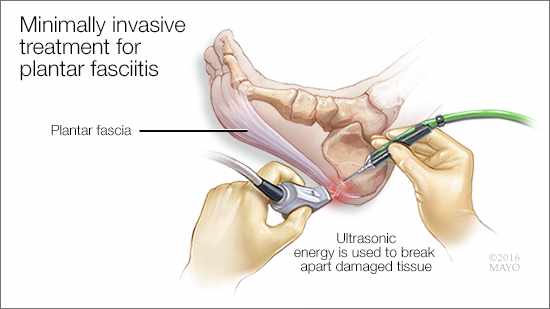- Home
- /
- Tenex Treatment of Heel...
About Tenex Treatment of Heel Pain
Park East Podiatry, the office of Dr. Neil Zwiebel is the first office in the New York area to be able to offer the Tenex treatment of Plantar Fasciitis. This new treatment is a proven minimally invasive treatment for plantar fasciitis.
To treat plantar fasciitis effectively, the extra stress on the plantar fascia must be relieved, so the tears can heal. For most people, these small tears can be treated successfully with physical therapy and special equipment that gives the foot extra support. A cortisone or other injection also may be considered.
But, for some, this isn’t enough, and finding a solution to the chronic pain and loss of function due to plantar fasciitis can be frustrating. Open surgery to remove the damaged tissue is an option, but recovery often is prolonged, and recurring pain is common.
Fortunately, a minimally invasive treatment is available for patients with plantar fasciitis who otherwise have not found relief. Percutaneous ultrasonic fasciotomy uses the Tenex Health TX tissue removal (debridement) system. The procedure, which can be done in a doctor’s office, can be used on elbows, shoulders or other places where tendinopathy (irritation in the tendons) may develop, as well.Â
How it works
Before the procedure, imaging tests — such as ultrasound or MRI— are done to determine the location and extent of the degenerated tissue. Once Dr Zweibel has a clear picture of what’s going on, he numbs the skin over the area and makes a small incision ─ just large enough to insert a needle-like probe.
Dr Zweibel then inserts the probe into the opening, guided by ultrasound imaging. The probe’s oscillating tip produces ultrasonic energy, which breaks down the damaged tissue directly ahead of it. At the same time, a built-in inflow-outflow fluid system simultaneously irrigates and sucks up the broken down, or emulsified, tissue. Once all of the degenerated tissue is cleared away, the probe is removed, and the incision is closed with adhesive skin tape and a pressure bandage. The whole procedure takes only a few minutes, and complications are few.
After the procedure, patients must rest the area for several days and may need crutches or a walking boot to relieve pressure on the foot. But, they usually can get back to their regular routine within a week to 10 days, although it might take several months before returning to the activity that prompted the plantar fasciitis. Improvement continues as the tissue heals. Some people may benefit from additional physical therapy.

